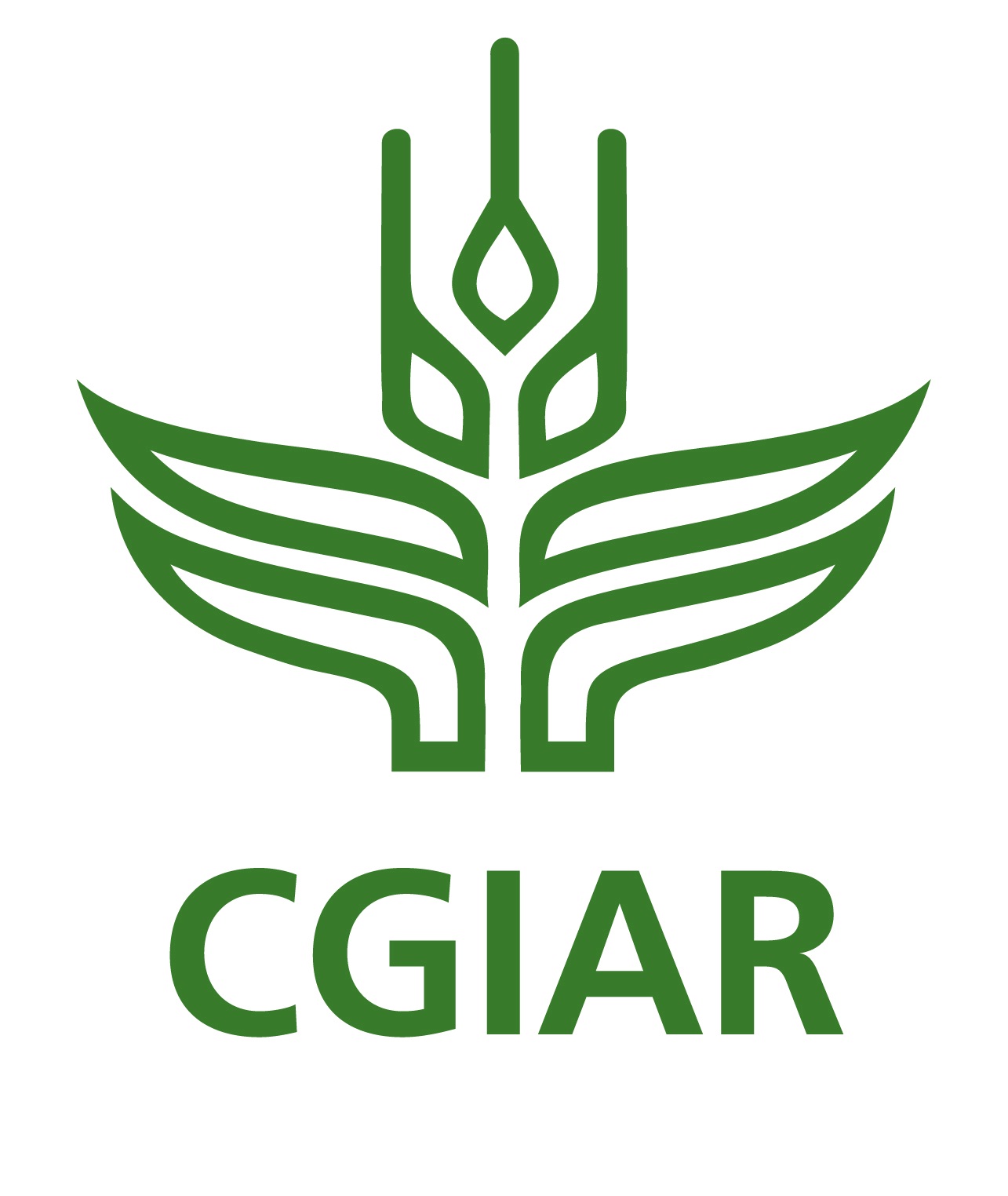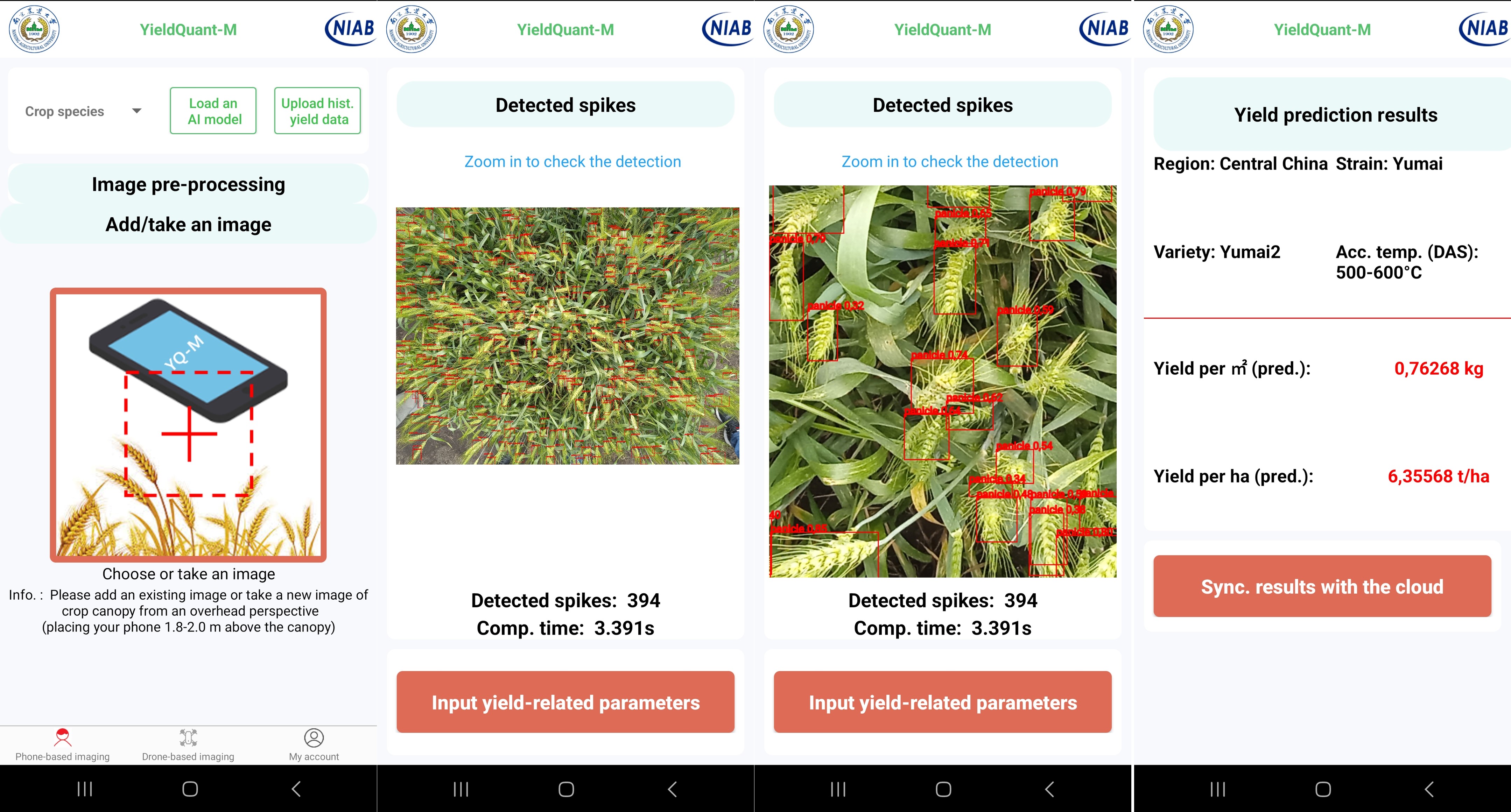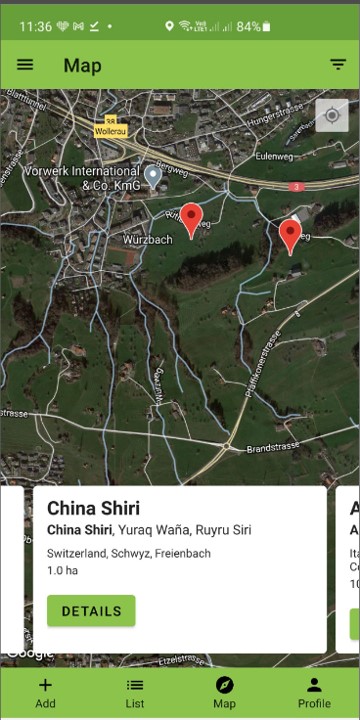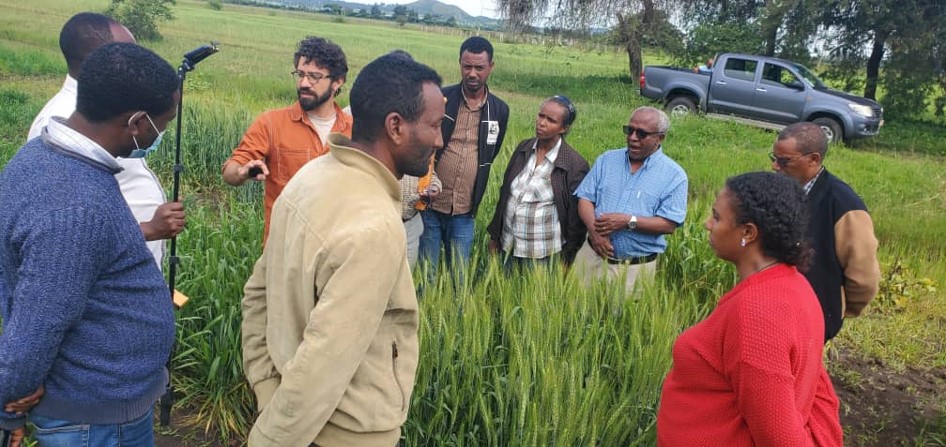- About
-
Research
- Agronomy and farming systems
-
Agricultural crop research
-
Research projects - agriculture
- About SASSA-SAI
- BioBoost
- Biomass Connect
- CTP for Sustainable Agricultural Innovation
- Climate Ready Beans - workshop presentations (March 2022)
- Crop diversity HPC cluster
- Designing Future Wheat
- Final project workshop
- Get involved
- List of materials
- News and updates
- Partners
- Rustwatch
- The Sentinel Crop Disease Surveillance Network
- The research team
- UK Cereal Pathogen Virulence Survey
- UK wheat varieties pedigree
- Weed management - IWM Praise
- Crop breeding
- Crop characterisation
- Data sciences
- Genetics and pre-breeding
- Plant biotechnology
- Plant pathology and entomology
- Resources
-
Research projects - agriculture
-
Horticultural crop research
-
Research projects - horticulture
- Augmented Berry Vision
- BEESPOKE
- Boosting brassica nutrition in smart growing systems
- CTP for Fruit Crop Research
- Develop user-friendly nutrient demand models
- Egg laying deterrents for spotted wing drosophila
- Enhancing the nutritional quality of tomatoes
- Improving berry harvest forecasts and productivity
- Improving vineyard soil health through groundcover management
- Intelligent growing systems
- Knowledge transfer for sustainable water use
- POME: Precision Orchard Management for Environment
- RASCAL
- STOP-SPOT
- UV-Robot
- Crop science and production systems
- Genetics, genomics and breeding
- Pest and pathogen ecology
- Field vegetables and salad crops
- Plum Demonstration Centre
- The WET Centre
- Viticulture and Oenology
-
Research projects - horticulture
- Crop Science Centre
- Research Projects
-
Services
- Analytical Services
- Business Development
- Commercial trial services
- Membership
- Plant breeding
- Plant characterisation
- Seed certification
-
Training
-
Technical agronomy training
- Advanced crop management of bulb onions
- Advanced crop management of vegetable brassicas
- Advanced nutrient management for combinable crops
- Benefits of cover crops in arable systems
- Best practice agronomy for cereals and oilseed rape
- Developing a Successful Strategy for Spring Crops
- Disease Management and Control in Cereal Crops
- Incorporating SFI options into your rotation
- Protected Environment Horticulture – Best Practice
- Techniques for better pest management in combinable crops
- Crop inspector and seed certification
- Licensed seed sampling
-
Technical agronomy training
- News & Views
- Events
-
Knowledge Hub
- Alternative and break crops
-
Crop genetics
- POSTER: Diversity enriched wheat (2025)
- POSTER: Genetics of wheat flag leaf size (2024)
- POSTER: Wheat yield stability (2024)
- Poster: Traits for future cereal crops (2022)
- POSTER: wild wheat fragment lines (2022)
- POSTER: Improving phenotyping in crop research (2022)
- PRESENTATION: Plant breeding for regen ag
- Poster: Designing Future Wheat (2020)
- Crop nutrition
-
Crop protection
- POSTER: Understanding the hierarchy of black-grass control (2025)
- POSTER: Emerging weed threats (2025)
- POSTER: Disease control in barley (2025)
- Poster: Weed seed predation in regen-ag (2024)
- POSTER: Disease control in winter wheat (2025)
- POSTER: Mode of action (2023)
- POSTER: Inter-row cultivation for black-grass control (2022)
- POSTER: UKCPVS winter wheat yellow rust in spring 2025 (2025)
- Poster: Management of Italian ryegrass (2021)
- POSTER: UKCPVS winter wheat rusts - 2024/25 review (2025)
- POSTER: UKCPVS disease monitoring and the benefit to UK growers (2025)
- POSTER: Diagnosing and scoring crop disease using AI (2025)
- POSTER: Finding new sources of Septoria resistance (2024)
- POSTER: Fungicide resistance research (2024)
- POSTER: Detecting air-borne pathogens (2024)
- POSTER: Oilseed rape diseases (2024)
- POSTER: Fungicide resistance research (2024)
- POSTER: Improving chocolate spot resistance (2022)
- Poster: Pathogen diagnostics (2022)
- Fruit
- Regen-ag & sustainability
-
Seed certification
- POSTER: Wheat DUS (2024)
- POSTER: Innovation in variety testing (2024)
- POSTER: AI and molecular markers for soft fruit (2024)
- POSTER: Barley crop identification (2023)
- POSTER: Herbage grass crop identification (2023)
- POSTER: Herbage legume crop identification (2024)
- POSTER: Minor cereal crop inspecting (2023)
- POSTER: Pulse crop identification (2023)
- POSTER: Wheat crop identification (2023)
-
Soils and farming systems
- POSTER: Checking soil health - across space and time (2024)
- POSTER: Checking soil health - step by step (2024)
- POSTERS: Changing soil management practices (2022)
- Poster: Monitoring natural enemies & pollinators (2021)
- POSTER: Soil structure and organic matter (2024)
- POSTER: Novel wheat genotypes for regen-ag (2024)
- Video: New Farming Systems project (2021)
- Video: Saxmundham Experimental Site (2021)
- POSTER: Impact of prolonged rainfall on soil structure (2024)
- POSTER: Soil & agronomic monitoring study (2024)
- POSTER: The impact of rotations & cultivations (2024)
- VIDEO: Great Soils; soil sampling guidelines (2020)
- Poster: Soil invertebrates within arable rotations (2024)
- VIDEO: Soil health assessment (2021)
- POSTER: Saxmundham - modern P management learnings
- POSTER: Saxmundham - 125 years of phosphorus management
- Poster: Soil phosphorus - availability, uptake and management (2025)
- POSTER: Morley long term experiments (2025)
- POSTER: Exploiting novel wheat genotypes for regen-ag (2025)
- Video: Saxmundham Experimental Site (2021)
- Varieties
Using artificial intelligence for variety identification

Artificial Intelligence; is it a force for good or a force for evil? A question that has regularly been asked in the media in recent times. This mostly focuses on the grand scale or doom mongering but what are the impacts for agriculture and what meaningful contributions in the Agri-Food sector it is having now?
Ji Zhou, Robert Jackson and Felipe Pinheiro outline some of the ways the AI/Data Science team at NIAB is utilising AI to identify varieties based on photos as part of the One CGIAR Seed Equal Initiative.
Since our establishment in early 2020 the Data Sciences Department at NIAB has been using AI and machine learning techniques to advance multi-scale phenotyping and AI-powered trait analysis capabilities across NIAB and with academic and industrial collaborators.
For example, NIAB uses the drone-based aerial phenotyping platform, AirMeasurer, and IoT-based sensing (eg CropSight and CropQuant™) for monitoring agricultural and horticultural crops during the season. Equipment such as the Videometer and SeedGerm platforms are used to monitor seed quality, germination, and vigour testing.
Project funded by:

After a recent BBSRC award, NIAB jointly established a UK leading high-performance computing (HPC) and GPU clusters infrastructure with the James Hutton Institute, and other partners, for results dissemination, cloud-based informatics and AI predictive modelling.
With this background, One CGIAR asked us a simple question, can you build an AI method to identify specific food crop varieties from just a few pictures of the crop?
For context, One CGIAR is a global research partnership for a food secure future, dedicated to transforming food, land and water systems in a climate crisis through a $1 billion annual research portfolio.
The partnership unites 15 international organisations and has 10,000 staff working across 89 different countries, producing science that has brought benefits to hundreds of millions of people around the world. One CGIAR supports innovative solutions to improve food security, increase biodiversity, stimulate economic growth and strengthen resilience of farming systems.
Figure 2. Examples of ear count and yield prediction using the NIAB/Nanjing University YieldQuant-M app.

A key part of this is Seed Equal (Delivering Genetic Gains in Farmers’ Fields), which aims to support the equitable delivery of seed adapted to the various agronomic, climate and market challenges that farmers face. A fundamental of Seed Equal’s activities is to carry out AI-powered varietal identification.
Dr Ian Barker, a senior director for strategy delivery and scaling in the One CGIAR Genetic Innovation Science Area and is also based at NIAB in Cambridge, made the initial connection with Professor Zhou.
He is convinced by the power of AI for varietal identification: “I have observed potato experts at NIAB being trained in correctly identifying 200 different potato varieties. If humans can do this, AI can also do it this with our domain knowledge”.
This will also facilitate the accurate measurement of adoption rates of CGIAR varietal technologies and the prediction of yield to better measure genetic gain in farmer fields. And this is where the AI/Data Sciences team at NIAB comes in.
Figure 3. The VarScout app showing variety location in a region

Through the awarded CGIAR initiative, we will contribute to “Combining cloud- and smartphone-based AI solutions for varietal identification of wheat and potato”, a project aims to advance the vision-based AI modelling tailored for varietal identification using cutting-edge AI algorithms such as Transformer and Visual Attention.
Currently, NIAB has pioneered AI-models to assess key yield components in wheat and are developing AI-based image recognition algorithms and open-source software (Figure 1).
With One CGIAR the ambition is to integrate this into VarScout, a digital ecosystem designed to record, store, and visualise crop varietal data on a local, national and international scale (Figure 2).
Dr Marcel Gatto, a senior scientist and agricultural economist at the International Potato Center and co-lead of this project highlighted that smallholder farmers in developing countries often do not know the identity of the varieties they are growing. Methods for accurate varietal identification exist, such as DNA fingerprinting, but are very costly and results are only available after months.
Powering VarScout with AI tools is a much-needed innovation to provide cost effective and real-time varietal adoption and yield data without compromising on data quality. This work has three main components:
- The development of AI-based models for cloud-based variety identification in wheat
- The integration of phone-based yield prediction and variety identification models into an Android application (APP) (Figure 3)
- The verification and improvement of the APP using One CGIAR’s resources for other food crops, such as potato, beans, etc.
To do this, first we needed to collect a set of images with which we could build a training set.
And so Felipe Pinheiro, from the Data Science group, packed his bags and flew off to Ethiopia. Ethiopia presents an interesting trial location for this work. Hosts of crop inspectors travel far and wide across the country to collect samples for DNA identification of different wheat varieties, and if they are collecting samples, they could also collect images? This would provide us with a dataset of variety images tied to known varieties.
Before image collection across the country could happen, Felipe spent a week training numerous groups of inspectors in the specific protocol for photographing wheat with camera phones provided by the One CGIAR team on the ground (Figure 4).

Figure 4. NIAB's Felipe Pinheiro in Ethiopia training crop inspectors in plot imaging
Whilst this sounds simple it is a key step. The success or failure of an AI prediction model regularly rests on the quality and number of images that will be used in training the AI models.
Another important success factor is to take the pictures from agronomic varietal trials where the 20 most dominant wheat varieties were planted as, on smallholder farms, wheat fields can be a mix of different varieties. Therefore, Felipe had to train 100+ inspectors in a new method of image collection, ensuring consistent and high-resolution images with right organ parts acquired.
Now completed, this dataset along with a similar one from the UK are being used to build a baseline AI model for key and variety identification.
This is where the cutting-edge AI aspect comes into the project with attention mechanisms (a process assigning different weights to different parts of the image based on the relevance to the task at hand) to identify defining organ parts, by which specific varieties can be identified from the high-level (colour and shape) and low-level (texture and pixel connections) features in the photographs. Once completed, the prototype will be tested in 2024 verses farmers’ responses and DNA fingerprinted data collected for the same varieties.
Finally, we will explore incorporating the app into the current VarScout app aiding farmers, agronomists, extension workers or anyone to record the location of where a particular crop variety is growing based solely on imagery.
So, how is AI helping farmers now?
Well, we are already using it in field mapping and grain assessment in breeding, and the next step for the AI/Data Science team and One CGIAR is phone-based variety identification and yield predictions allowing us to accurately monitor yield and measure genetic gains in farmers’ fields.
This article originally appeared in the Winter 2023/4 edition of NIAB’s Landmark magazine. Landmark features in-depth technical articles on all aspects of NIAB crop research, comment and advice. You can sign up for free and get Landmark delivered to your door or inbox:





